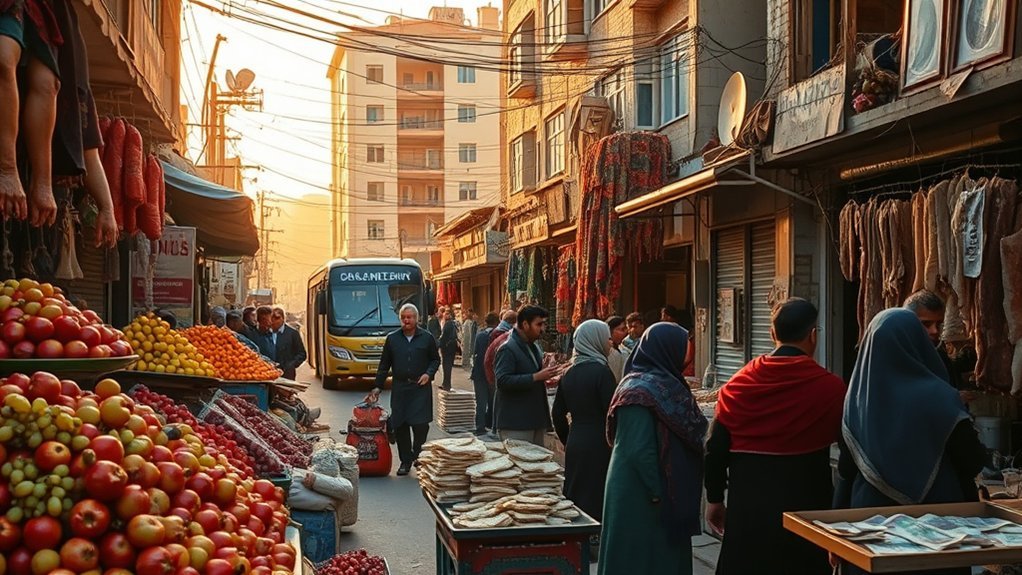You can live very cheaply in Afghanistan by global standards—about $426/month on average—but your budget depends on housing, security and expat services. Local rents and food are low: basic groceries and lunches cost a few dollars. Expat-standard 1‑bed apartments, high-speed internet (~$91/month), secure compounds and medevac-ready insurance push costs into the $450–$3,000+/month range. Plan contingencies and tier your budget; keep reading for detailed breakdowns and planning tips.
Overview of Living Costs and What to Expect
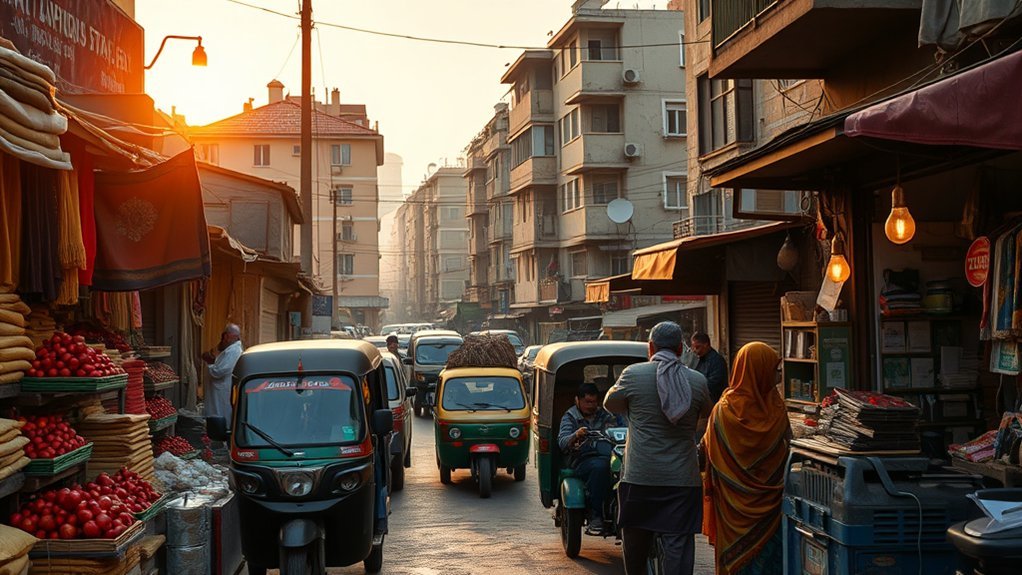
Although everyday prices in Afghanistan are very low by global standards, your purchasing power will depend heavily on income and lifestyle choices. The Cost of Living averages about $426 monthly countrywide (≈2.68× cheaper than the world average), but GDP per capita and average monthly net salary sit near $216, so locals face constrained budgets.
Consumer items are cheap: lunch ~$2.40, bread ~$0.21 (0.5 kg), milk $0.68/L, chicken breast $3.21/kg. Housing in Kabul and elsewhere drives variation: reported rents show one-bedroom apartments can range from roughly $75 for basic units to $450–$900 for nicer options, while villas may reach $3,000. That makes the average cost of housing highly context-dependent and a larger share of income for locals.
Monthly utilities are modest (~$45 for one person), and transport is inexpensive, but some expat-standard services—reliable high-speed internet (~$91/month)—raise costs relative to local incomes.
Housing and Rental Prices in Major Cities
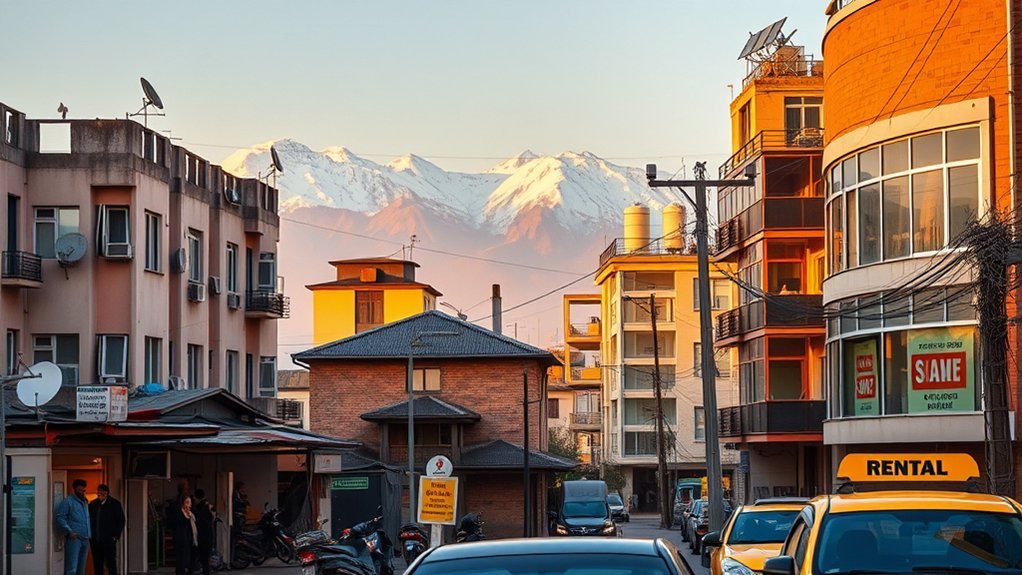
When you compare typical rents in Kabul, you’ll see a wide range: expat 1‑bedrooms commonly run $450–$900/month while local-market 1‑beds can be as low as $46–$75.
A nice 2‑bed for expats averages about $650 (with mid‑range sources reporting $250–$400), and villas or high‑security houses can reach ~$3,000.
Expect leases to be long‑term, often include basic appliances and security, and cost at least several times the national minimum wage.
Typical Rent Ranges
Rental costs in Kabul vary widely and often depend on whether you’re an expat or a local: expat-focused one-bedroom units typically rent for about $450–$900/month while local one-bed options commonly fall around $150–$300.
You’ll find a bedroom apartment in Kabul can be as low as $46.7–$75.2 for very cheap listings, but mid-range averages sit much higher.
A two-bedroom for expats is commonly about $650, with local 2-beds around $250–$400.
Villas and larger houses can reach ~$3,000 in affluent, secure areas.
Note that rent is at least six times the national minimum wage in many cases, so housing remains relatively expensive compared with local incomes and requires long-term leases.
Expat Housing Features
After outlining typical rent ranges, it helps to look at what expat-grade units actually offer for those price points. You’ll find expat apartments in Kabul priced $450–$900 for 1-bed (nicer units often toward lower end with long-term leases) and about $650 for 2-bed; villas and houses can reach $3,000. Many units include fridge, stove, microwave; higher tiers add A/C, washer/dryer, hot-water heaters. Secure compounds provide pools, gyms, internet, satellite TV and heavy security (walls, barbed wire, armed guards). Contracts favor long-term leases; document condition with inventory and photos. Compare cost vs. amenity level when choosing: basic appliance inclusion vs. compound safety and service premiums.
| Amenity | Typical Tier | Emotional Weight |
|---|---|---|
| Appliances | Basic–Standard | Relief |
| Security | Compound-level | Reassurance |
| Luxury | Villas/houses | Exclusivity |
Food, Groceries, and Dining Out
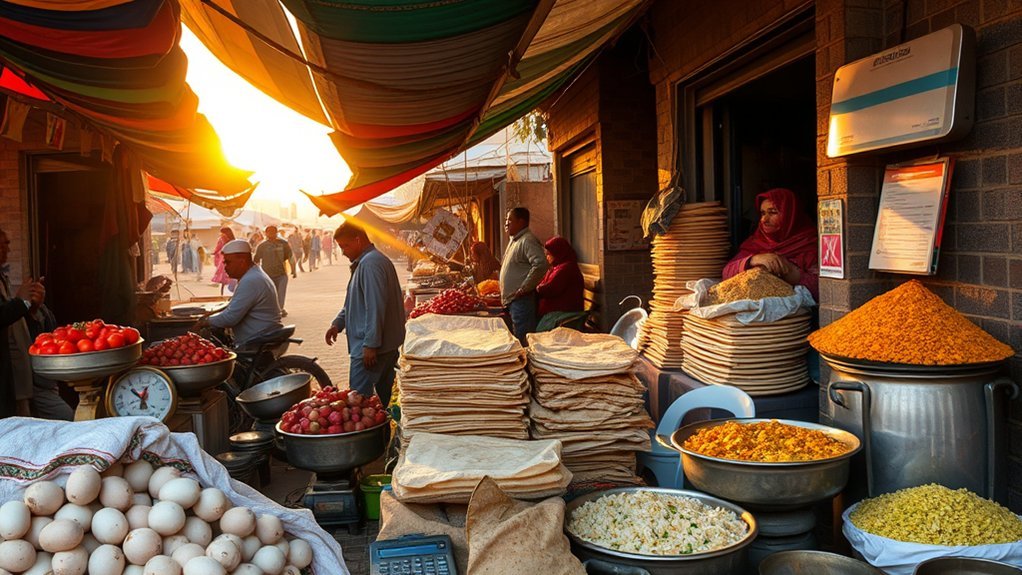
Typically, you’ll find eating out in Afghanistan is inexpensive compared with many countries: a typical lunch costs about $2.40, a fast-food meal runs ~$4.03, and a mid-range dinner for two averages $11.00.
When evaluating Cost for living in Kabul, factor dining out versus self-catering: a lunch menu often undercuts takeout in many cities, and mid-range meals remain affordable.
Groceries reflect low staple prices: rice (1 kg) ~$1.86, chicken breast (1 kg) ~$3.21, round steak (1 kg) ~$5.71.
Bread (0.5 kg) ~$0.21, milk (1 L) ~$0.68, a dozen eggs ~$1.50, apples (1 kg) ~$0.57.
A 0.5 L soft drink is ~$0.40, while beer and wine—where available—range from ~$0.83 (store beer) to ~$2.90 (pub).
You can usually lower monthly food spending by cooking: buying staples and protein at local markets typically costs less per meal than dining out, though dining out remains a low-cost convenience option.
Utilities, Internet, and Household Expenses
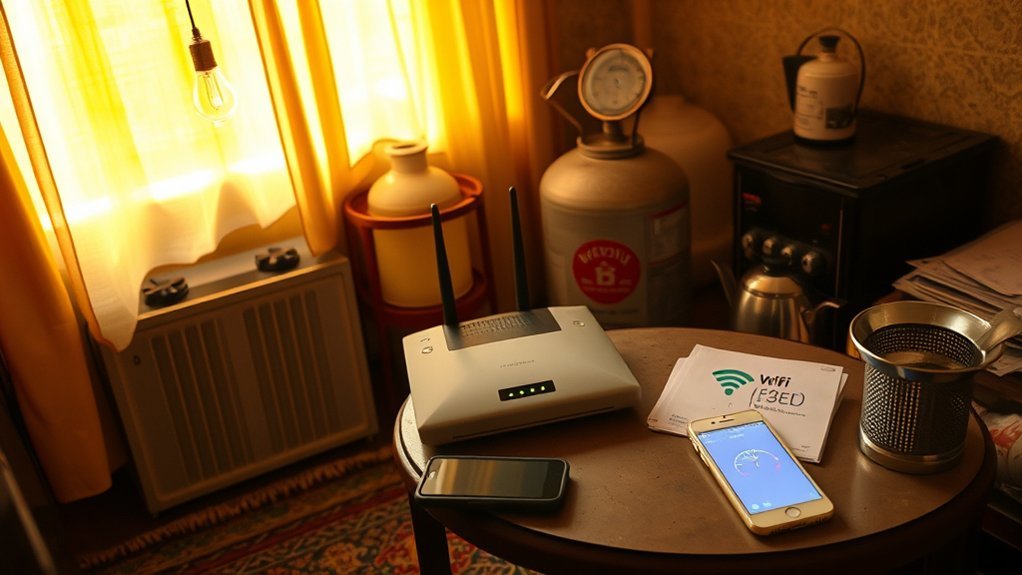
When you tally monthly household bills in Afghanistan, expect utilities for a single apartment (electricity, heating, cooling, water, garbage) to run about $45.20 per person and roughly $69.60 for a family, with local transport adding about $12.30 and one‑way fares near $0.26. You’ll find the cost of living driven by variable energy access; some rentals include AC or hot water heaters, but reliable electricity often needs backups. Broadband internet is comparatively expensive: a 50+ Mbps unlimited plan averages $91.10 monthly, so factor that into household expenses when comparing budgets. Consumables are cheap relative to international norms—four rolls of toilet paper cost about $1.07 and shampoo about $3.69—lowering recurring grocery-style spends. Use this table to compare typical monthly figures:
| Item | Typical Monthly | Role in Budget |
|---|---|---|
| Utilities (per person) | $45.20 | Essential |
| Utilities (family) | $69.60 | Shared cost |
| Internet (50+ Mbps) | $91.10 | Communication |
Transportation, Communication, and Daily Services
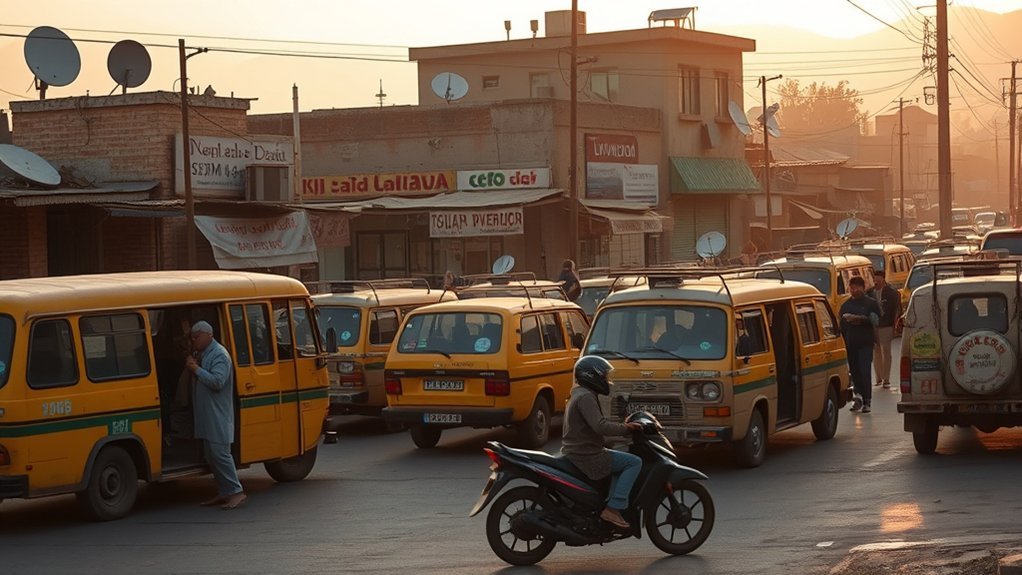
Anyone relying on daily transport and services in Afghanistan will find costs mixed: local bus fares are very cheap at about $0.26 per ride (or $12.30 for a monthly pass), taxis average roughly $8.46 for an 8 km trip, and petrol is low at approximately $0.98 per liter, which keeps vehicle operating costs down; by contrast, communication can be a major budget item—an unlimited 50+ Mbps home internet plan runs near $91.10 monthly—while basic health and personal services remain affordable (a doctor visit about $14.90, a haircut about $2.85) and everyday consumables like 1 L of milk ($0.68) or four rolls of toilet paper ($1.07) exert minimal pressure on household spending.
You’ll find transportation choices shape your monthly budget: public transport and petrol favor low daily costs, but relying on taxis increases spend. Mobile and internet quality varies; high-speed home plans are the main price per month outlier. Compare frequency, distance, and service expectations when budgeting.
- Public transport: $0.26 per ride / $12.30 price per month
- Taxi: ~$8.46 per 8 km trip
- Mobile and internet: ~$91.10 per month for 50+ Mbps
Healthcare, Insurance, and Safety Considerations
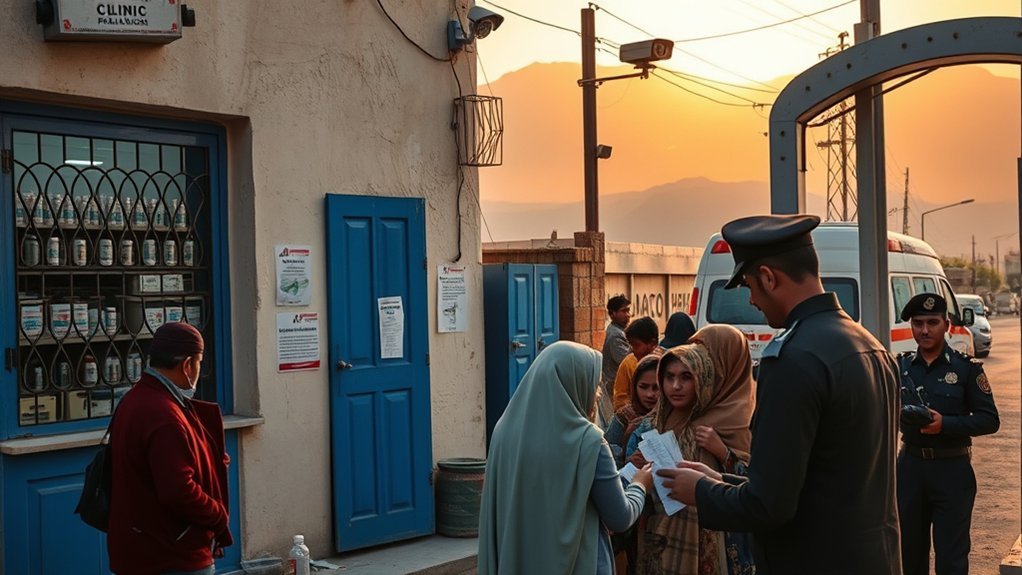
Public services and security realities you considered for transport and communication directly affect healthcare access and costs in Afghanistan. You’ll find healthcare uneven: a private doctor visit averages $14.90 and common medicines about $3.20, yet specialized care can be unavailable or far pricier. You should carry chronic meds and records; diagnostics may be scarce.
| Reality | Emotional weight |
|---|---|
| Limited hospitals | Anxiety |
| Medication scarcity | Vulnerability |
| High medevac cost | Fear |
| Security risks | Urgency |
| Insurance gaps | Relief/necessity |
You must buy supplemental medical insurance that explicitly covers medical evacuation (medevac) and repatriation—standard local plans often won’t. Quantitatively, factor medevac premiums and private security into monthly totals: medevac-ready plans can add substantial one-time or recurring costs. Security risks (kidnapping, attacks, crime) degrade response times and raise overall risk exposure; plan contingency budgets and select insurers with proven evacuation networks.
Tips for Budgeting and Moving to Afghanistan

Because costs and risks vary sharply by lifestyle and location, you should build a budget that separates baseline local expenses (very low) from security- and expat-grade premiums (substantial).
Start by listing core local costs: basic food (bread $0.21/0.5 kg; rice $1.86/kg; chicken $3.21/kg), transport ($0.26 single, ~$12 monthly), and cheap housing (basic 1-bed $46–$75/month).
Then add tiers: expat-style 1‑bed rentals at $450–$900/month, housing security and utilities for walled compounds or generators that push totals into several hundred or up to $3,000/month, and high-speed internet (~$91/month).
Plan contingencies for imported goods and restaurants, which are comparatively expensive.
Prioritize international health insurance and a stock of essential medicines because private care or medevac is costly.
For moving logistics, compare local rentals vs. furnished expat compounds, factor in relocation fees, and allocate an emergency fund equal to 3–6 months of your chosen cost tier.
- Tiered monthly budget
- Healthcare & insurance reserve
- Housing security premium
Frequently Asked Questions
How Much Money Do You Need to Live in Afghanistan?
Like a tightrope, you’ll need about $200–$2,000+ monthly: locals often manage on ~$200–$500, while expats budget $600–$2,000+ depending on housing, security, healthcare, and lifestyle choices, utilities and food included.
What Is the Average Monthly Salary in Afghanistan?
The average monthly salary in Afghanistan is about $216 after tax. You’ll find earnings vary markedly by sector and location, with expat or international roles paying substantially more than local averages. Data are approximate.
How Much Is the Average Rent in Afghanistan?
Astronomical as it sounds, you’ll typically pay about $150–$900 monthly for Kabul one-bedrooms; two-bedrooms average ~$250–$650, while expat villas can reach ~$3,000—rent varies sharply by neighborhood, security, and amenities.
Can Foreigners Buy a House in Afghanistan?
Yes — but it’s complicated: you can rent easily, while buying requires government permission or local partners, carries title and security risks, and needs heavy due diligence, legal counsel, embassy checks, and often long-term lease alternatives.
Conclusion
You’ll find Afghanistan’s cost of living generally lower than regional neighbors: rent and groceries are cheaper than Iran or Pakistan, but import-dependent goods and private healthcare can spike expenses. Expect big city rents to dominate budgets while utilities and local transport stay modest. “A stitch in time saves nine” — plan for contingencies like security-related costs and sudden price changes. Compare cities, prioritize housing and healthcare, and budget a 15–30% buffer for volatility.

